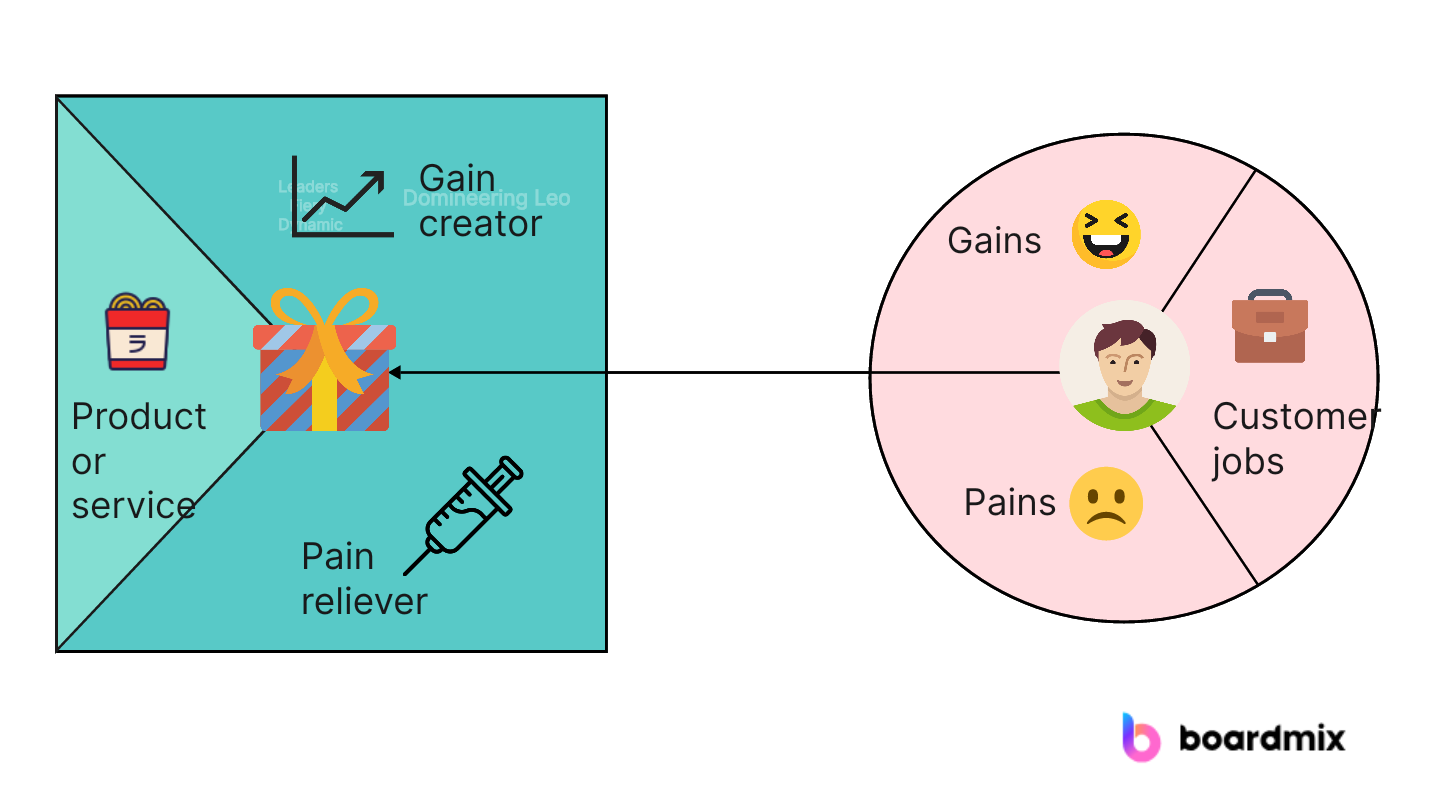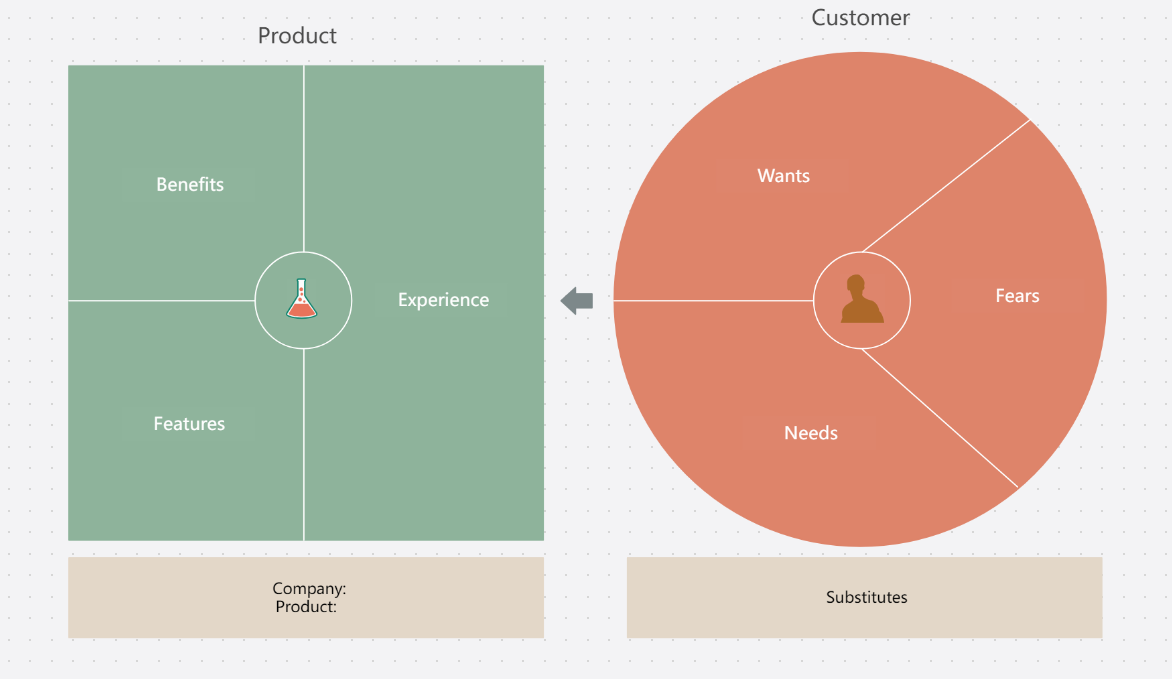A well-crafted value proposition can be the key to distinguishing your brand and capturing your target audience's attention. Customers can get the product highlights and compare different products before choosing. This article delves into the essence of value propositions, explores their various types, and provides actionable insights on creating and utilizing value proposition templates tailored to different work scenarios. By the end, you'll understand how to leverage modern tools to streamline the process of crafting compelling value propositions that resonate with your audience.
What is a Value Proposition?

Try Value Proposition for Free
A value proposition is a clear, concise statement articulating your product or service's unique value to customers. It answers the critical question, "Why should customers choose your brand over others?" A robust value proposition highlights the benefits and solutions your offering provides, differentiating it from competitors.
At its core, a value proposition focuses on:
Target Audience: Identifying and understanding the needs and desires of your ideal customers.
Benefits: Highlighting the specific advantages and positive outcomes customers can expect.
Differentiation: Emphasizing what makes your product or service unique in the market.
What are the Four Types of Value Proposition?
Understanding the different types of value propositions helps businesses tailor their messages effectively. Here are the four primary types:
1. Primary Value Proposition
This overarching statement encapsulates the core value your business provides to its customers. It addresses the main reasons why your target audience should engage with your brand. It often highlights the fundamental benefits and mission of the company, presenting a broad picture of what the brand stands for and the key advantages it offers.
Examples: "We help small businesses grow through affordable, easy-to-use marketing software."
Use Case: Effective for creating a broad, company-wide message that can be used across various marketing and sales channels. It serves as the foundation for all other types of value propositions within the company.
2. Prospect-Level Value Proposition
Tailored to specific customer segments or buyer personas, this type of value proposition focuses on the unique needs and pain points of different groups within your target audience. It is customized to address the particular concerns, desires, and motivations of each segment, ensuring that the message resonates on a personal level.
Examples: "For busy professionals, our app saves time by automating task management."
Use Case: Ideal for personalized marketing campaigns and sales strategies that target distinct customer groups. It helps in creating more targeted and effective marketing messages that appeal to specific prospects.
3. Product-Level Value Proposition

Try Value Proposition for Free
Concentrates on the unique value and benefits of a specific product or service. It highlights what sets a particular offering apart from competitors. It focuses on the features, advantages, and outcomes associated with a specific product or service, detailing how it solves a problem or improves the customer's experience.
Examples: "Our water bottle keeps beverages cold for 24 hours, making it perfect for outdoor adventures."
Use Case: Useful for product-specific advertising, product pages on e-commerce sites, and targeted product launches. It helps in clearly communicating the unique selling points of a product to potential customers.
4. Process-Level Value Proposition
Focuses on the unique processes, methodologies, or technologies your business uses to deliver value. It emphasizes how these processes enhance efficiency, quality, or customer satisfaction. It highlights the innovative or superior methods your company employs in production, service delivery, or customer support, showcasing how these processes provide a competitive edge.
Examples: "Our patented manufacturing process ensures the highest quality and consistency in every product."
Use Case: Effective for B2B marketing, particularly in industries where process innovation is a key differentiator. It appeals to customers who value the behind-the-scenes aspects that lead to a better product or service.
Value Proposition Templates for Different Work
Using value proposition templates can streamline the process of articulating your brand's value. Here are some templates tailored for various work scenarios:
1. Startup Business Value Proposition Template
This template focuses on innovation, solving unique problems, and attracting early adopters. Helps new businesses convey their unique selling points and attract initial customers and investors.
Example: "Our [product/service] helps [target audience] who want [specific need] by providing [unique solution]. Unlike [competitor], we offer [differentiating factor]."
2. B2B Service Value Proposition Template

B2B service emphasizes efficiency, cost savings, and ROI for business clients, and it is suitable for service providers targeting other businesses with practical, results-driven solutions.
Example: "Our [service] enables [target business] to achieve [specific goal] by offering [key benefit]. This results in [measurable outcome], setting us apart from [competitor]."
3. E-commerce Value Proposition Template

The template highlights product variety, convenience, and customer experience, and it is useful for online retailers looking to attract and retain customers in a competitive market.
Example: "At [e-commerce site], we provide [target audience] with a wide selection of [products] that are [benefit]. Our [unique feature] ensures [positive customer experience], differentiating us from [competitor]."
4. Non-Profit Value Proposition Template
Non-Profit Value Proposition focuses on mission, impact, and community benefits, and it helps non-profits articulate their cause, attract donors, and engage volunteers.
Example: "Our organization [non-profit name] is dedicated to [cause]. We help [beneficiaries] by [specific action], leading to [positive impact]. Your support makes a difference because [unique approach]."
How to Create Value Proposition?
Creating a compelling value proposition involves several key steps that help you articulate the unique value your product or service provides to customers. Follow these steps to craft a value proposition that resonates with your target audience:
1. Identify Your Target Audience
Conduct Market Research: Understand who your ideal customers are. This involves analyzing demographic information, purchasing behavior, and preferences.
Define Customer Personas: Create detailed profiles of your target customers, including their needs, pain points, and goals. This helps you tailor your message to address their specific concerns.
2. Highlight Benefits and Solutions
List Key Benefits: Identify the main benefits your product or service offers. These should directly address the needs and pain points of your target audience.
Focus on Outcomes: Emphasize the positive outcomes and improvements customers can expect from using your product. This could include time savings, cost reductions, enhanced convenience, or improved performance.
3. Differentiate from Competitors
Analyze Competitors: Research what your competitors are offering and how they position their products or services.
Identify Unique Selling Points: Determine what sets your product or service apart. This could be a unique feature, superior quality, innovative technology, exceptional customer service, or a better user experience.
Highlight Differentiation: Clearly articulate these unique aspects in your value proposition to show why customers should choose you over competitors.
4. Use Clear and Concise Language
Avoid Jargon: Use simple language that your target audience can easily understand.
Be Specific: Avoid vague statements. Instead, be specific about the benefits and unique aspects of your product or service.
Keep It Short: A value proposition should be brief and to the point. Aim for one to two sentences that capture the essence of your offering.
5. Test and Refine
Gather Feedback: Share your value proposition with customers, team members, and stakeholders to get their input. Use surveys, focus groups, and direct feedback to understand their perceptions.
Analyze Feedback: Evaluate the feedback to identify areas for improvement. Look for common themes and suggestions that can help you refine your message.
Iterate and Improve: Continuously refine your value proposition based on the feedback and changing market conditions. Ensure it remains relevant and compelling over time.
Leveraging Online Tools like Boardmix
Creating value propositions has become more accessible with online tools. Boardmix is an excellent platform for crafting and visualizing value propositions. Here's how to use Boardmix effectively:
1. Sign Up and Create a New Board
Register for an account on Boardmix and start a new board dedicated to your value proposition.
2. Use Pre-Designed Templates

Explore a variety of value proposition templates available on Boardmix, and select a template that aligns with your business needs.
3. Customize Your Template
Input your target audience, key benefits, and differentiating factors, and utilize Boardmix's drag-and-drop features to arrange elements visually.
4. Collaborate with Your Team
Invite team members to collaborate in real-time, and gather input and feedback to refine your value proposition. When you finish the value proposition, you can copy the link and share your final value proposition with stakeholders or incorporate it into presentations.
Crafting an effective value proposition is crucial for capturing your audience's attention and differentiating your brand in a competitive market. By understanding the different types of value propositions and using tailored templates, you can create compelling statements that resonate with your target customers. Leveraging online tools like Boardmix further simplifies the process, enabling you to collaborate, visualize, and refine your value proposition efficiently. Embrace these strategies to articulate your brand's unique value and drive business success.








